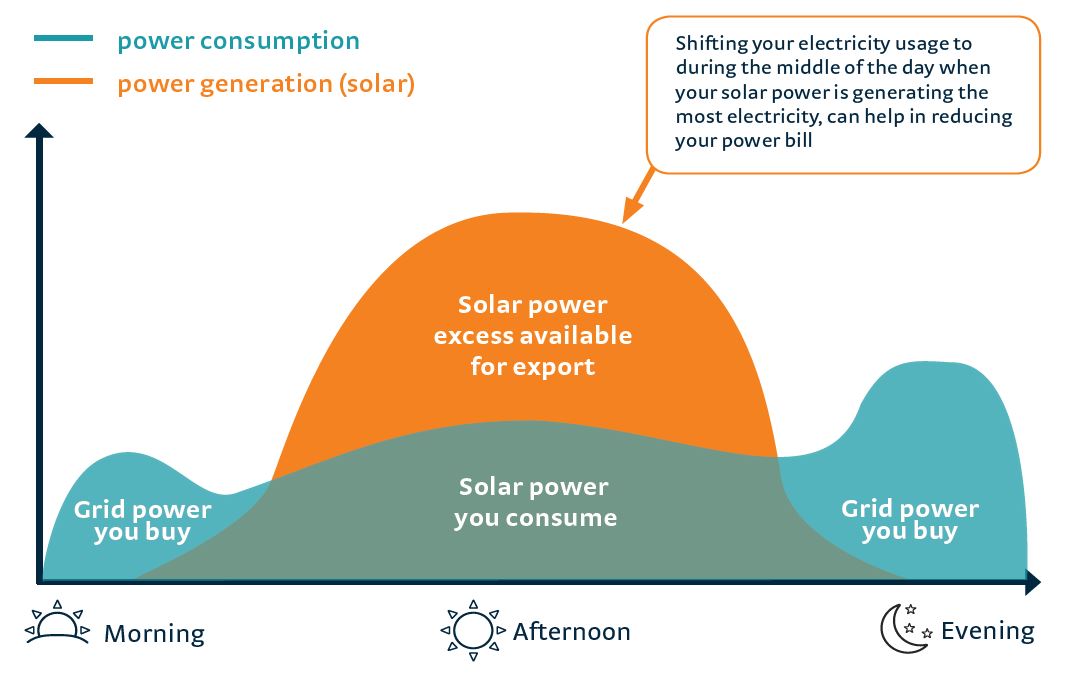What is the Feed-in Tariff (FIT) scheme?
- Home
- Help & support
- Solar, battery & renewables
- What is the Feed-in Tariff (FIT) scheme?
In 2010, when the solar industry was relatively new in WA, the State Government introduced a Feed in Tariff, which was essentially a credit paid to customers to encourage more household solar installation.
If you think you might struggle with your bill without FIT, we’re here to help.
Horizon Power offers help to customers who are struggling financially. Please contact us to discuss a customised payment arrangement, payment extensions or other assistance.
-
Why is FIT ending?
FIT was launched by the State Government in 2010 with an expiry period of 10 years. It was offered for a limited time to customers when the solar industry was relatively new in WA, as an incentive to encourage greater uptake of household solar.
Over the past 10 years, the FIT scheme has benefitted more than 75,000 customers across all of WA with more than $439 million paid to customers to date. Our WA community has embraced solar power, with one in every four household rooftops now fitted with solar panels.
-
How was my FIT end date calculated?
Your FIT end date was calculated 10 years to the day when your FIT contract commenced. See the clauses under section 8.1 in the Residential Net Feed-in Tariff Scheme Terms and Conditions document for more details (FIT T&Cs). You’ll find details in the contract you signed when you signed up for the FIT scheme.
If you have moved into a house with solar and have been receiving FIT, the end date is still 10 years to the day when the previous owners of your property signed up for the FIT scheme.
-
What do I need to do now FIT is ending?
You don’t need to do anything. FIT will automatically stop on the expiry date you’ve been provided in the letter to your household.
When the FIT ends, you’ll still have the benefits of your solar power along with the continued Renewable Energy Buyback Scheme payments at your current rate.
-
Does the end of FIT mean the end of the renewable energy buyback offer (REBS/DEBS)?
No. The buyback offer is still in place and is not affected by the end of FIT as long as your system inverter has not exceeded the size limit for your town/ location.
Learn more about the Renewable Energy Buyback Scheme (REBS) and Distributed Energy Buyback Scheme (DEBS).
-
What is the difference between FIT 40 and FIT 20?
These are two different types of tariff, paying different amounts per kilowatt hour (kWh) of energy fed back to the grid, depending on when you signed up.
As the names suggest:
• FIT 40 customers (who applied for rooftop solar panels from 1 July 2010 till 30 June 2011) received 40 cents per kWh.
• FIT 20 customers (who applied between 1 July 2011 and 1 August 2011) received 20 cents per kWh. -
How do I find out where my FIT credits were?
Your FIT credits appear on your power bill. You can get a copy of your bill through My Account or the Horizon Power app.
-
What is the best way to save money with a rooftop solar installation?
Even without FIT, having a rooftop solar installation could help you to save money by reducing your energy costs.
The more solar energy you use in your home during daylight hours, the less electricity you need to buy for use in the evening. Run your pool pump, dishwasher or set your washing machine to operate during peak solar production times between 10am and 2pm.
The image below illustrates solar production and how it peaks closer to 12 pm and then starts dropping towards the evening.

-
My bill is going up, what can I do?
To prepare for your future bills and avoid bill shock, you might like to:
- Let any credit in your account build up. This could help to manage your electricity account when the Feed in Tariff ends.
- Log onto My Account or the Horizon Power app to monitor your energy usage.
- Consider how you use your energy during daylight hours to be ‘solar smart’. Maximise your solar energy use during daylight hours and avoid using energy in the evenings to help reduce your power bills.
- Check out our Energy Saving Tips
- Choose the most energy efficient options when it’s time to buy new appliances. These might cost more upfront than lower star-rated appliances but will use less electricity in the long term.
-
FIT Terms & Conditions
Customers who still remain on the FIT scheme should refer to the Terms and Conditions. [0.03 MB]
Horizon Power acknowledges the Traditional Custodians throughout Western Australia and their continuing connection to the land, waters and community. We pay our respects to all members of the Aboriginal communities and their cultures; and to Elders past, present and emerging.
Aboriginal and Torres Strait Islander people are advised that this website may contain images, names or voices of deceased people.